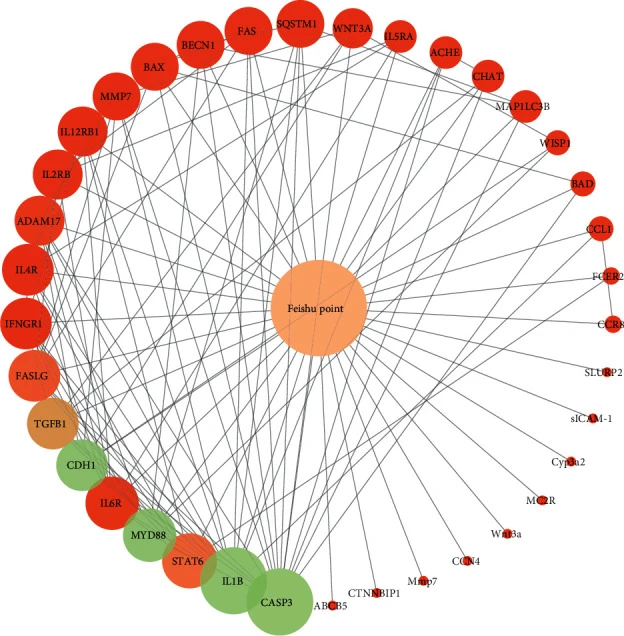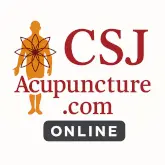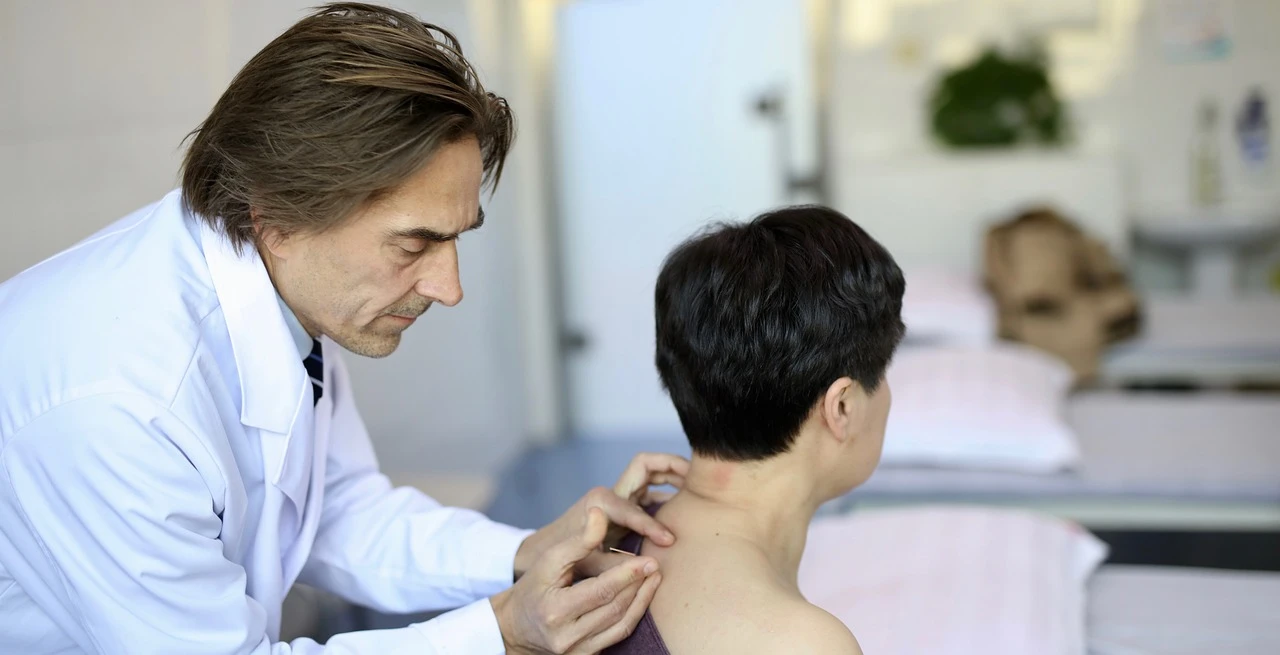This post may contain affiliate links and ads in which we may earn a small percentage of purchases.
Photo credit: Jessieheqi

If you’ve ever quit because meal plans felt overwhelming, this approach keeps it simple. The 21-Day Smoothie Diet gives you daily guidance, a detox reset, and easy recipes—so you can focus on consistency instead of planning. Instant digital access. Start today.
Urinary Bladder 13 (UB13, UB 13), also known as Feishu or Bladder 13 (Bl-13), is a commonly used acupuncture point, especially for lung conditions.
Quick Links!
Location
It is located 1.5 cun lateral to the center of the spinous process on the level of the third thoracic vertebra (T3). 1

Functions of UB13 From TCM and BioScience
TCM Function
The Feishu point (UB13) was first described in Lingshu Backshu.2
A clear and beginner-friendly guide covering over 400 acupuncture points, ideal for students and learners.
 View Book
View Book
A stainless-steel acupuncture pen and gua sha set for massage, reflexology, and tension relief.
 View Product
View Product
In Traditional Chinese Medicine (TCM), UB13 plays a crucial role in regulating and to tonify the Lung Qi. It is commonly used to treat a variety of lung-related issues.
UB13 is also the Back Shu point of the lungs, and back shu are used to tonify and invigorate in theory.
Acupressure and moxibustion can be utilized to derive positive health benefits from the acupuncture point.
Biomedical Function
From a biomedical perspective and based on research, UB13 is associated with the respiratory and immune system, as well as functions that may serve the area surrounding, including the following:
- Improve respiratory function
- Cough
- Expectoration
- Wheezing
- Shortness of breath
- Iontophoresis ( the process of passing a weak electrical current through the skin)
- Inflammation
Source: Various sources listed in references
Clinical Perspective
UB13 is a point that I use frequently in the clinic. Since the point is on the back, it is usually accessed when the patient is lying down prone (on their stomach) or on their side. This positioning allows the practitioner to adjust according to what fits the patient best. The accessibility of UB13 in these positions makes it easier to apply consistent and effective pressure or needle insertion.
Research on Acupuncture Point UB13
Research on UB13 is slightly limited due to the fact that research is ongoing, there are many acupuncture points that require further research, including single use along with use in a combination of points. There are many areas and aspects to still explore here in the U.S. in regards to how acupuncture works. However there is still some information available, and from my experience research will continue to grow as time moves forward.
UB13 and SARS-Cov-2
Moxibustion at the UB13 point can regulate fatigue and muscle aches in patients with severe acute respiratory syndrome coronavirus 2 (SARS-CoV-2).3 Acupressure of UB13 has also been shown to shorten the time to cough improvement and reduce cough symptom scores”.4
UB13 and Protein mapping
In 2021 researchers created a map used to examine proteins in the body affected by the use of UB13.

UB13 and Pneumonia
The same study in 2021 aimed at looking for protein makers expressed with pneumonia and which proteins UB13 has an affect on.

UB13 on Transdermal (across skin) Uptake of Asthma Gel
This study took a look at two acupuncture points, UB13 and Du14, on the uptake of sinapine thiocyanate in rats, which is the primary active compound of white mustard, “can pass through the skin and significantly enhances the release of interleukin-1β and tumor necrosis factor-α”, which might explain it’s efficacy in treating asthma and bronchitis.5
The concentrations of sinapine thiocyanate were significantly higher in the acupuncture point groups (UB13 and Du14) compared to the nonacupoint group (P < 0.05)6. Also, UB 13 had the highest transdermal penetration rate and accumulated transdermal amount of sinapine thiocyanate compared to the other groups.7
UB13 and Asthma
A 2018 study looked at the effects of UB13 and St36 on the inflammatory airway response of asthma in mice.
The study found that Acupuncture could reduce the inflammatory response and prevent airway remodelling in rats.8
The study also points out that acupuncture at BL13 alone did not cause a significant reduction in the number of neutrophils.9 However, acupuncture at UB13 and ST36 “significantly reduced the number of neutrophils when compared with the OVA group.”10
Precautions of UB13 in Clinical Practice
When using UB13, it is important to consider the following precautions:
- Avoid needling too deeply, especially in patients with a thin body frame, to prevent pneumothorax (punctured lung).
- Be cautious with patients who have had spinal surgery or neck fusion. In such cases, avoid putting excessive pressure on the neck and upper back area.
By incorporating UB 13 into treatment plans, practitioners can help alleviate a range of respiratory issues, enhancing overall lung function and patient well-being.
References:
- Cheng, X. (Ed.). (1999). Chinese acupuncture and moxibustion (Rev. ed.). Foreign Languages Press. ↩︎
- Xu, Y., Cai, J., Li, W., Miao, J., Mei, Y., Wang, X., Xu, H., Chen, Q., Liu, F., & Cui, H. (2021). Examining the Effector Mechanisms of the Feishu Acupoint (BL13) in the Treatment of Pneumonia Based on Systematic Acupuncture and Moxibustion Research. Evidence-based complementary and alternative medicine : eCAM, 2021, 5578104. https://doi.org/10.1155/2021/5578104 ↩︎
- ” ↩︎
- ” ↩︎
- Fan, W., Huang, Y., Wang, L., Liao, W., Li, Z., Wu, Y., Liao, F., Yu, J., & Liu, Q. (2017). Effect of stimulating the acupoints Feishu (BL 13) and Dazhui (GV 14) on transdermal uptake of sinapine thiocyanate in asthma gel. Journal of Traditional Chinese Medicine, 37(4), 503-509. https://doi.org/10.1016/S0254-6272(17)30157-7 ↩︎
- ” ↩︎
- ” ↩︎
- Nurwati, I., Purwanto, B., Mudigdo, A., Saputra, K., Prasetyo, D. H., & Muthmainah, M. (2019). Improvement in inflammation and airway remodelling after acupuncture at BL13 and ST36 in a mouse model of chronic asthma. Acupuncture in Medicine, 37(4), 228-236. https://doi.org/10.1177/0964528418818705 ↩︎
- ” ↩︎
- ” ↩︎
Medical Disclaimer: This article is for informational and educational purposes only and is not a substitute for professional medical advice, diagnosis, or treatment. Always consult a qualified healthcare provider with any questions about a medical condition or treatment.





